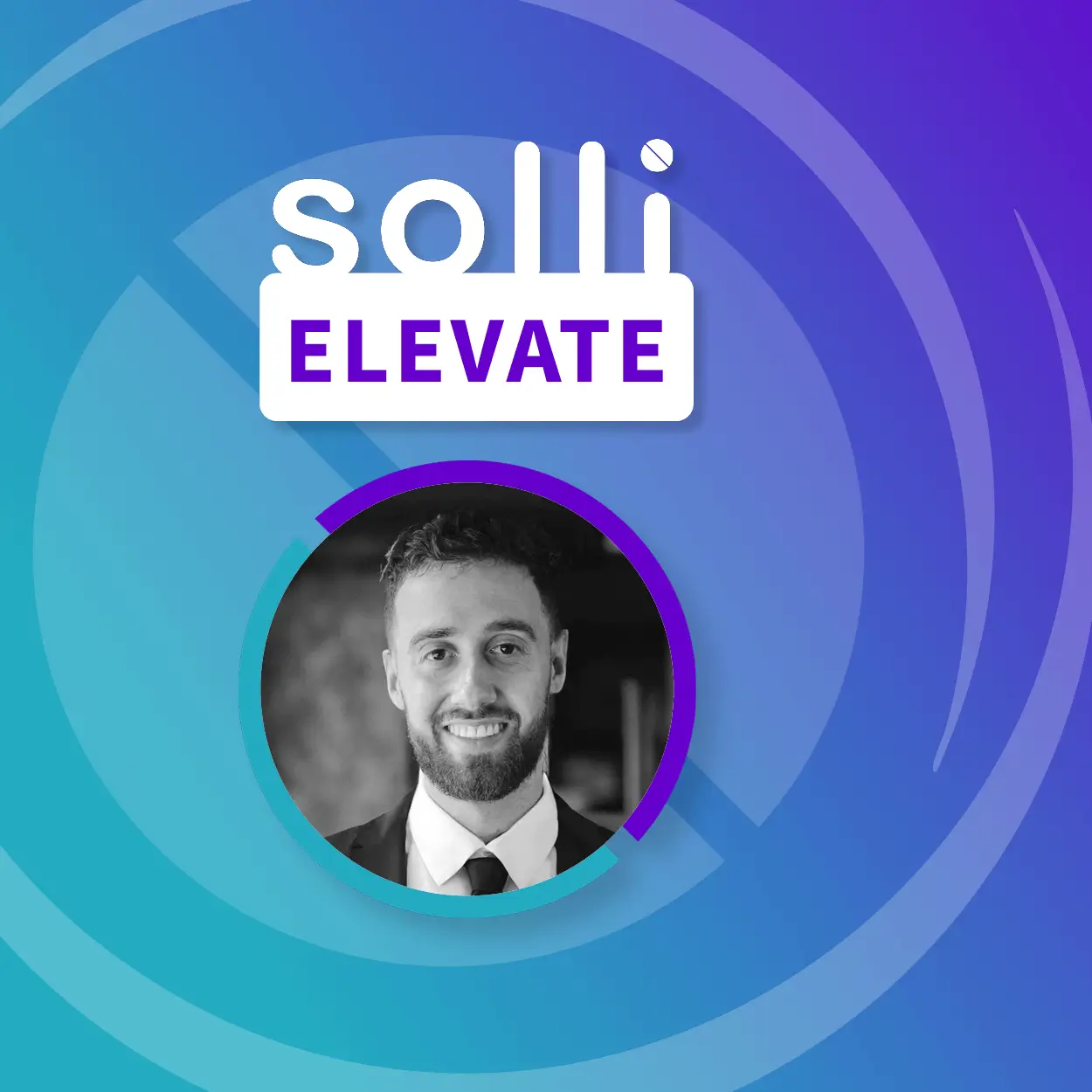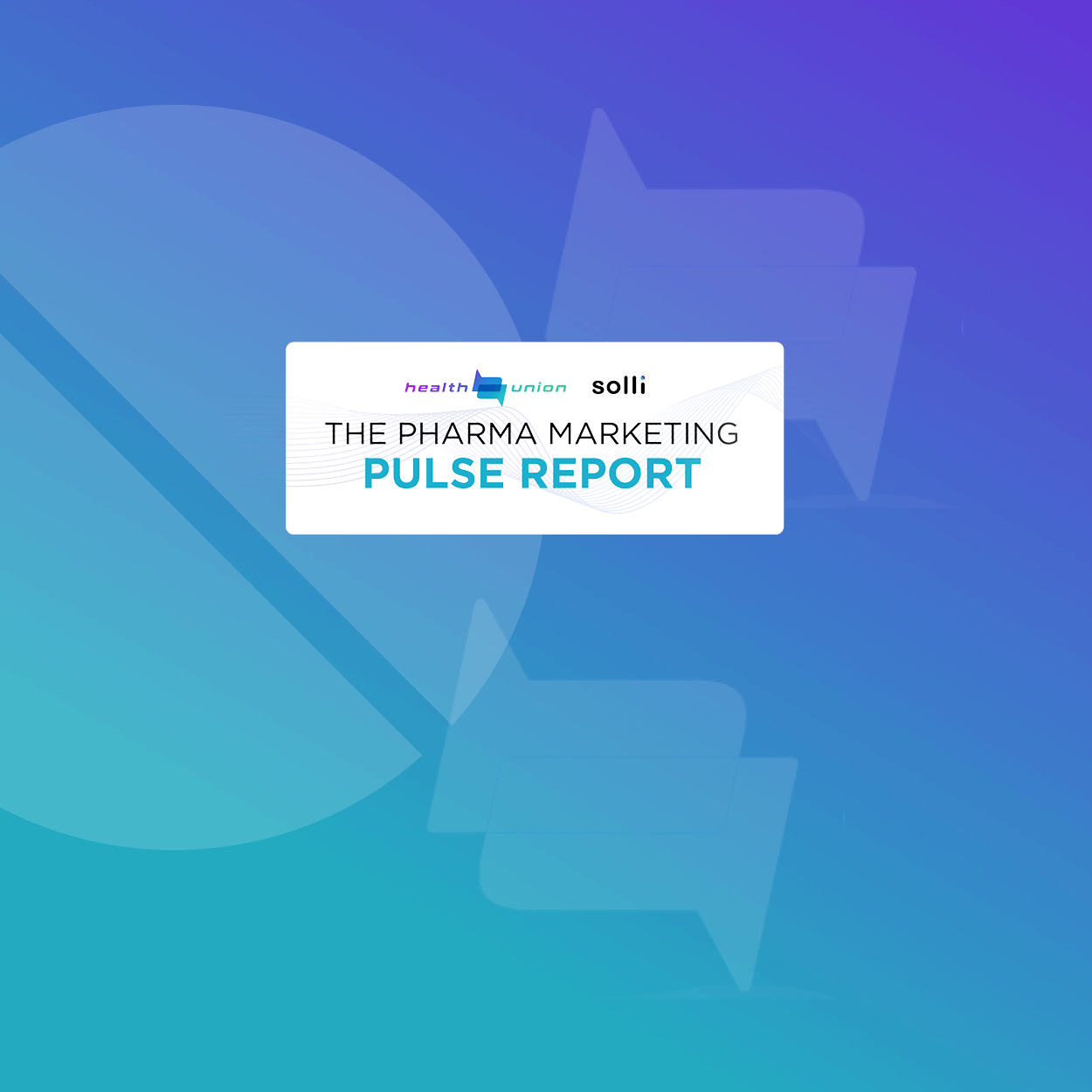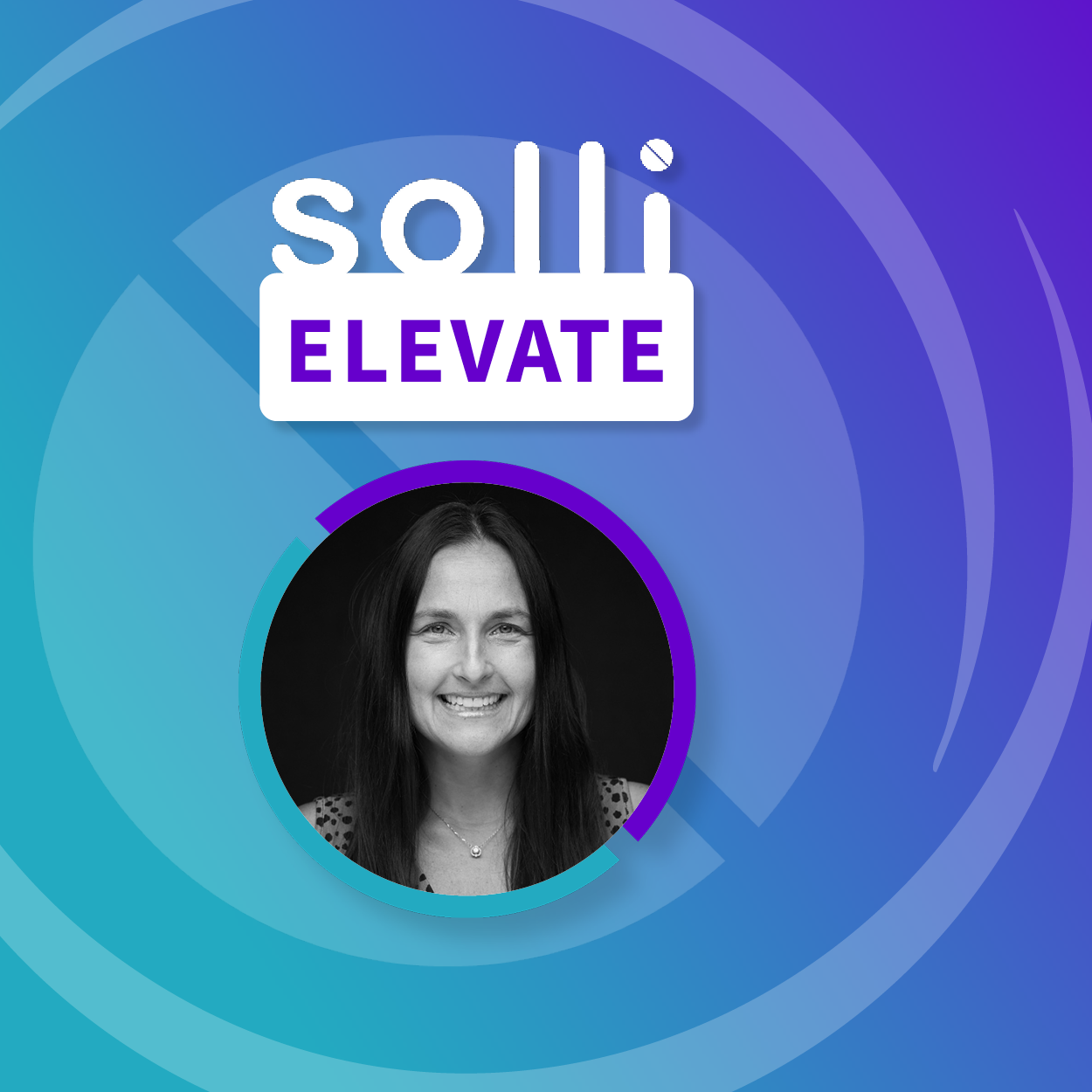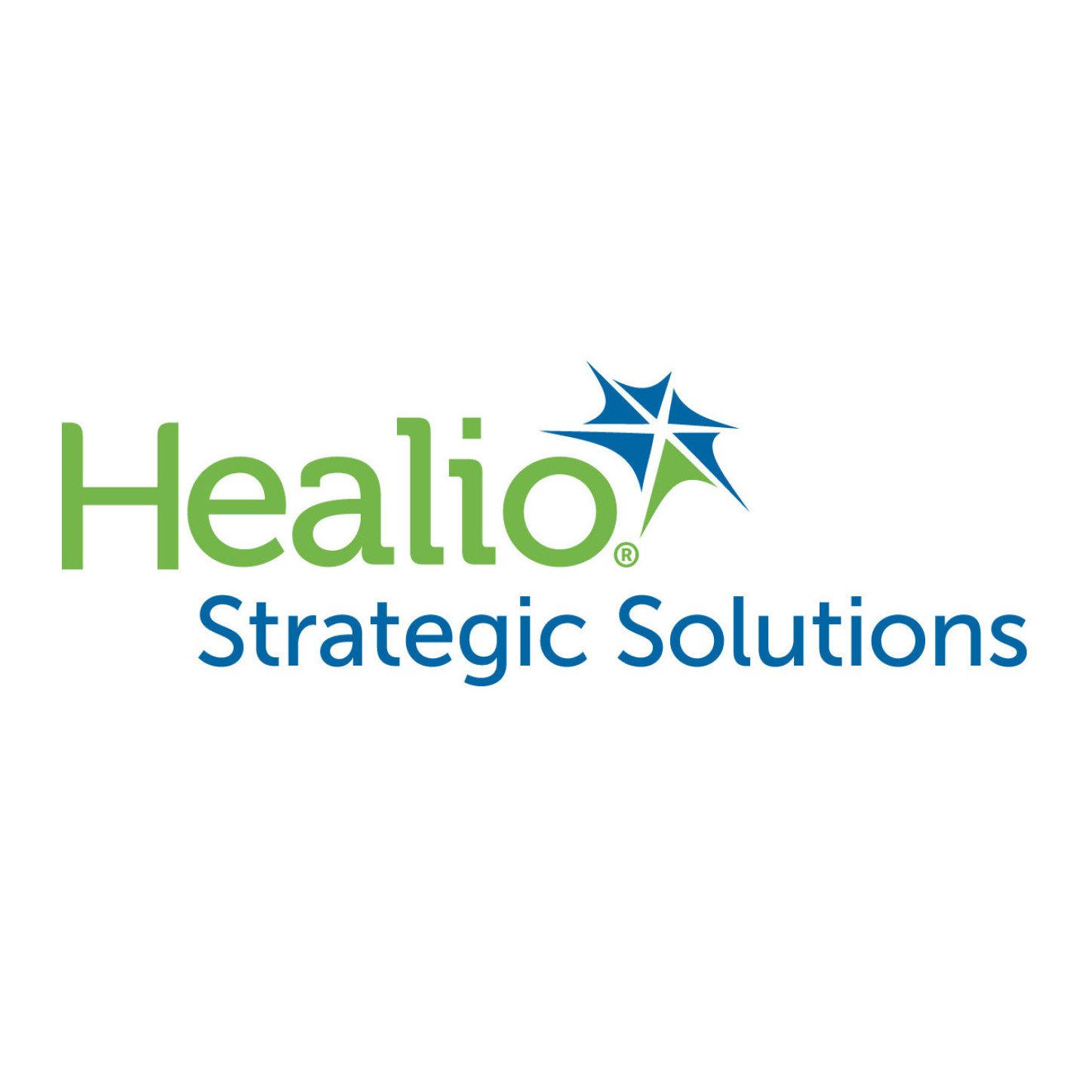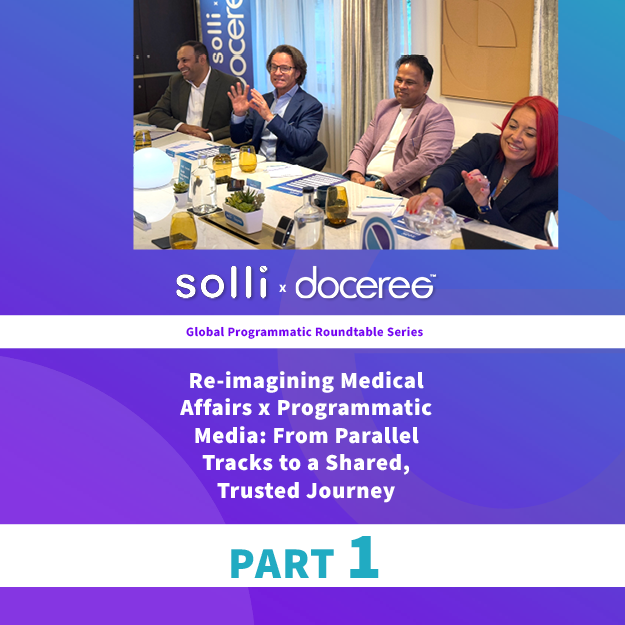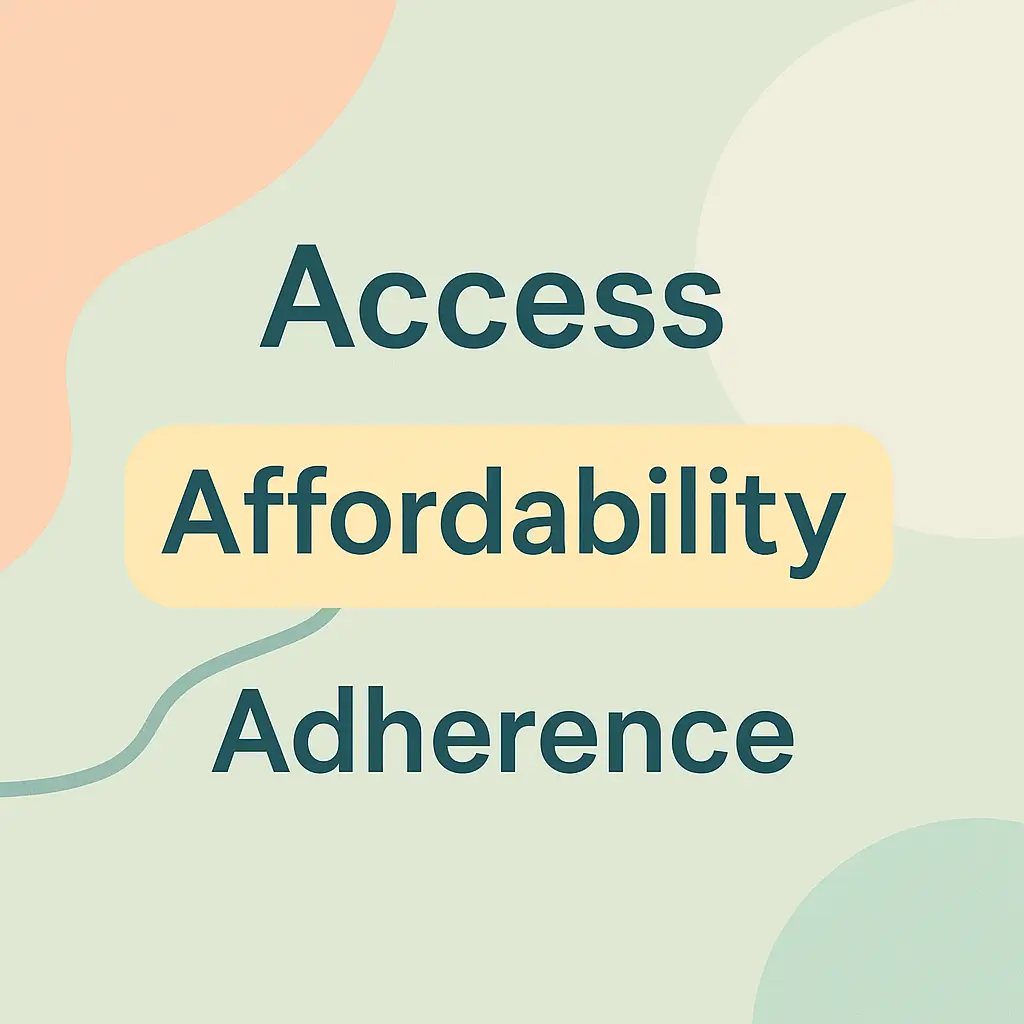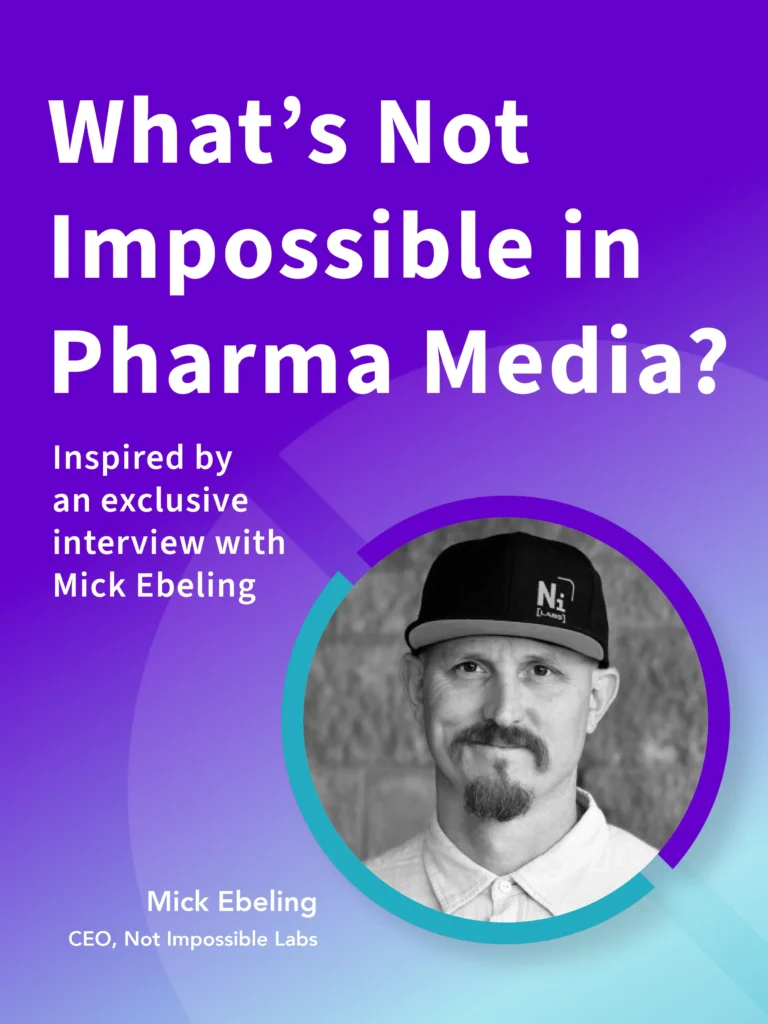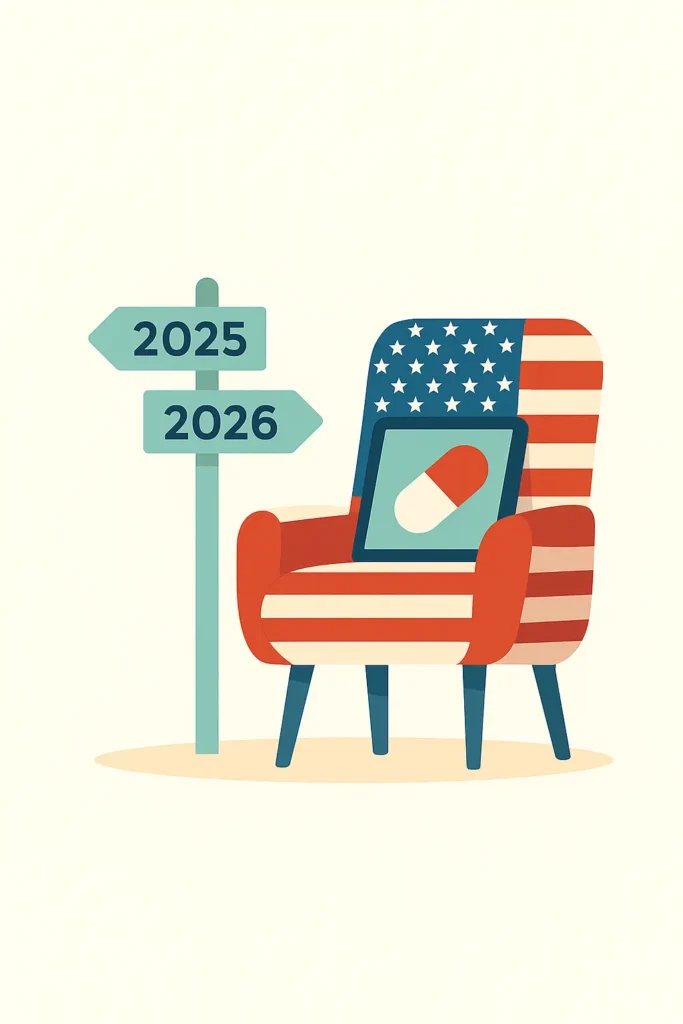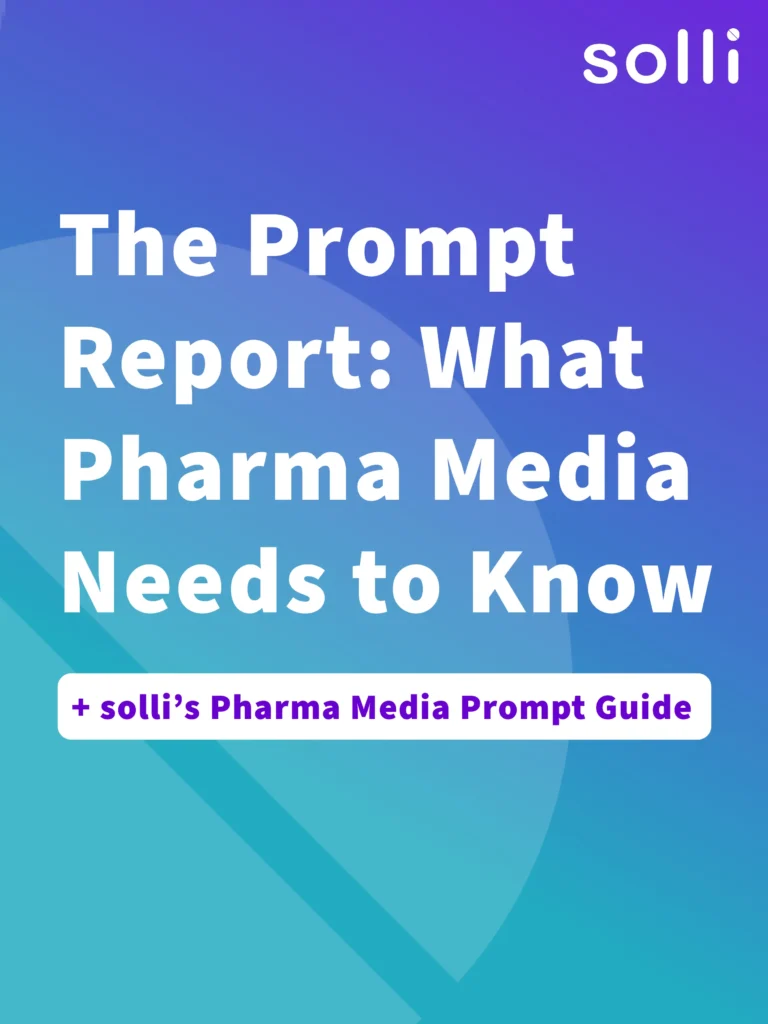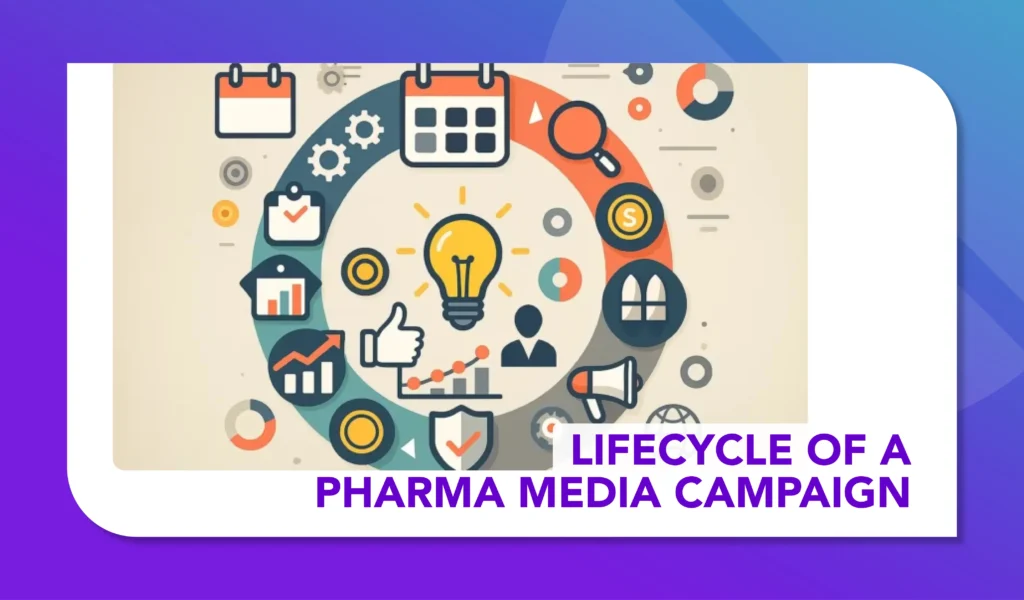Re-imagining Medical Affairs x Programmatic Media: From Parallel Tracks to a Shared, Trusted Journey
Part 2 - Insights from the solli × Doceree Global Programmatic Roundtable, Zurich
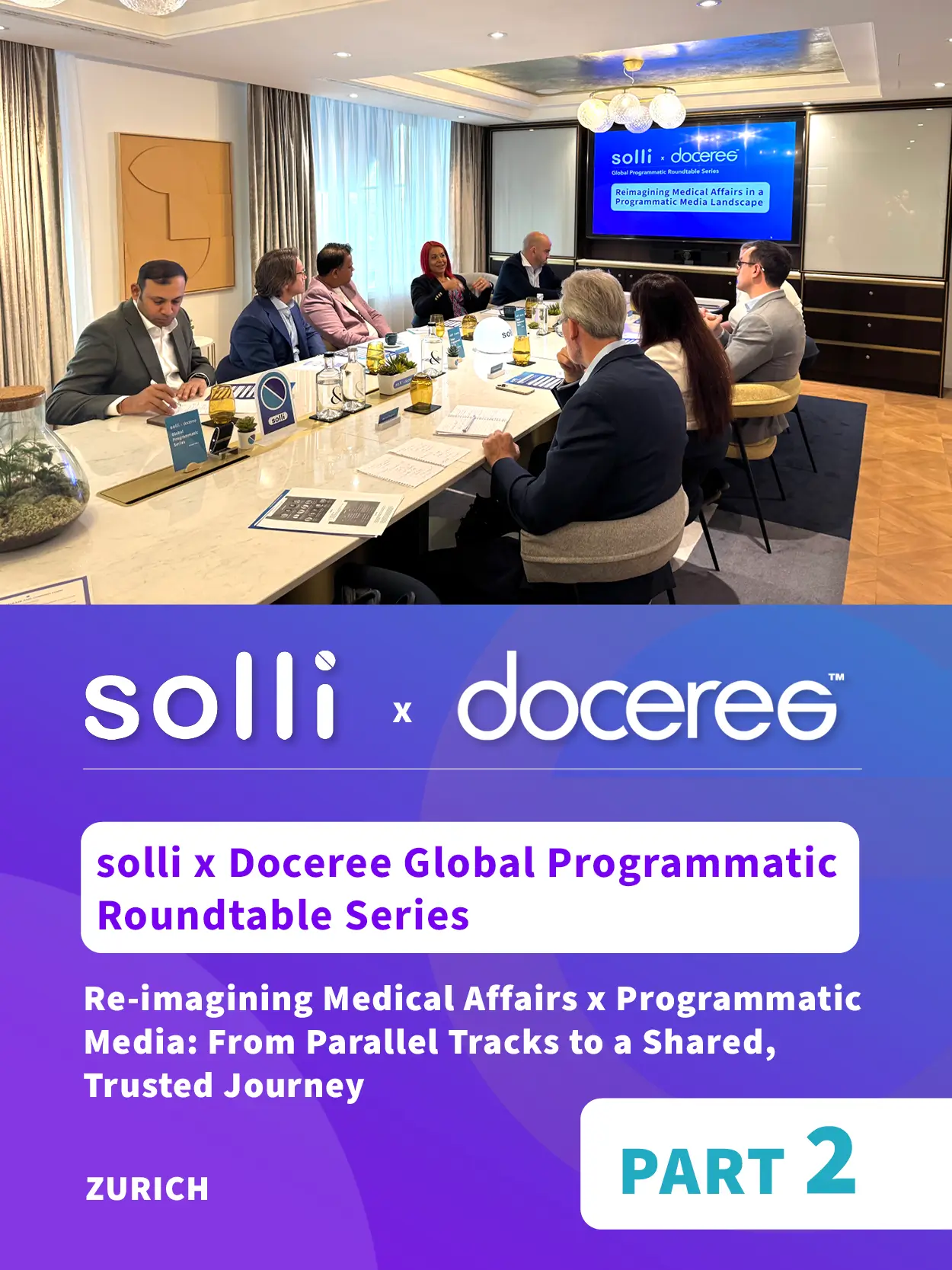
Part 1 of ‘Re-imagining Medical Affairs x Programmatic Media: From Parallel Tracks to a Shared, Trusted Journey‘ set the stage for a new era of collaboration between Medical Affairs and programmatic media, one where scientific integrity meets digital precision.
Now, in Part 2, we move from vision to implementation. The leaders around the table were clear: the opportunity is real, but realising it requires structural change, shared data environments, upskilled teams, and regulatory partnership.
From Vision to Implementation: How Pharma Can Unite Medical Affairs & Programmatic Media
Across the discussion, there was clear alignment among participants that re-imagining the relationship between Medical Affairs and programmatic media requires progress on four interconnected fronts. These are not theoretical ideals, but practical priorities drawn from shared frustrations, lived experience, and a collective desire to move from siloed efforts to integrated, evidence-led engagement.
The four areas the group agreed should guide industry action are:
1 | Organisational orchestration – one story, many channels
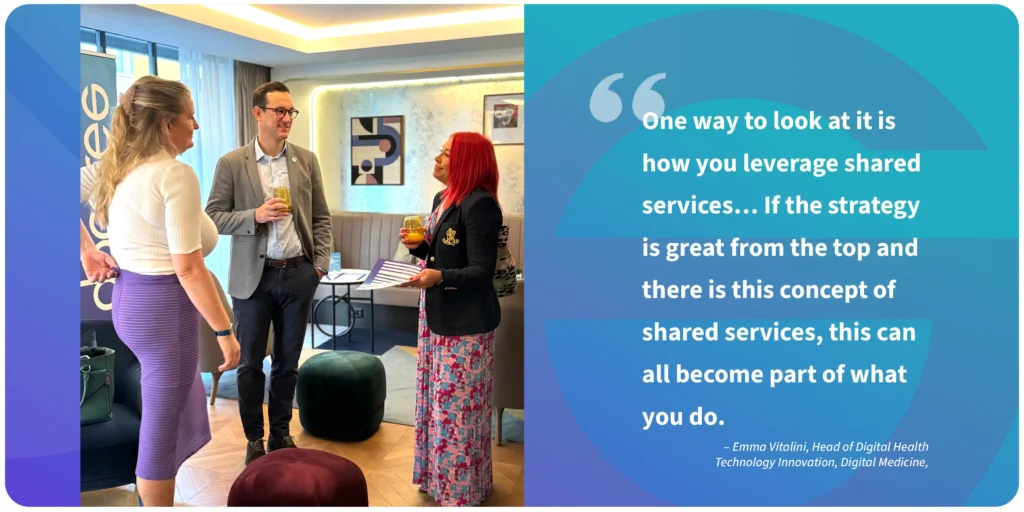
One of the clearest points of agreement in the roundtable was this: the way pharmaceutical organisations are structured makes alignment between medical affairs and brand teams challenging by default, not by accident. These silos are often intentional – created to protect compliance and objectivity – but they now risk slowing innovation and limiting the impact of both functions.
There was a clear divergence in the room – some participants spoke from years in commercial leadership, others from medical affairs – each with different mandates, incentives, and pressures. But ultimately, they agreed: both sides are essential, and neither can succeed without the other.
As one participant put it, “The brand team is the core unit… responsibility is what drives the decision and that decision lies with the brand team”. Yet medical affairs still holds the role of the “thickest filter… reliable, evidence-based, compliant”. Both functions carry essential expertise – but without deliberate orchestration, they risk running in parallel rather than in partnership.
Similarly, across everything, it is clear that relationships with field teams must remain central. But a reassurance that programmatic can strengthen – not replace – these touchpoints, by enabling smarter timing, better content, and more relevant follow-up.
The group agreed that re-imagining Medical Affairs & Programmatic Media requires senior sponsorship and a conscious effort to connect these functions, not by blurring their responsibilities, but by sharing technology, insight, and intent. Programmatic media should not be seen as a commercial tool alone, but as infrastructure that can carry scientifically approved narratives consistently across channels.
The potential when this orchestration works is powerful: medical strategy leads; programmatic scales it. Every digital interaction – before, between, and after a face-to-face conversation – can reinforce one coherent, trusted story.
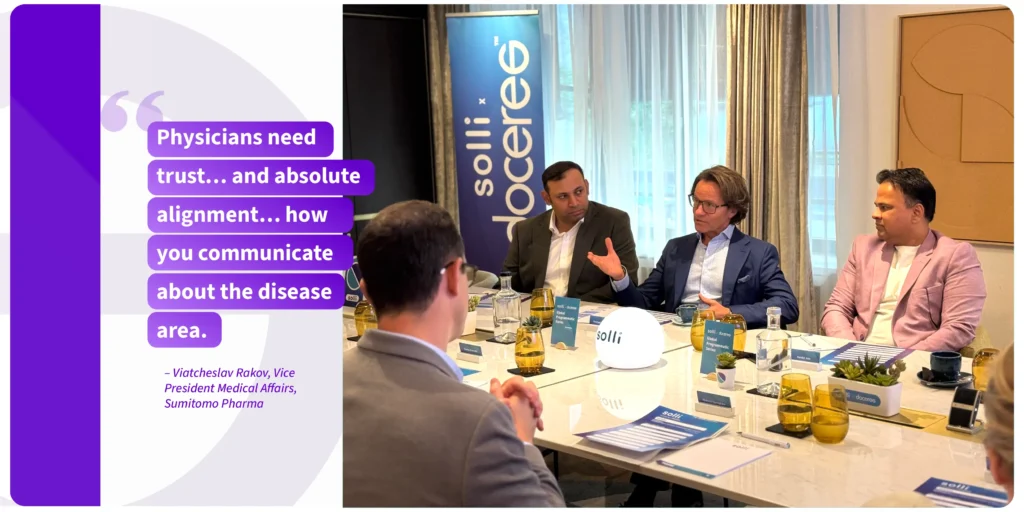
2 | Technical integration & data – from slides to signals
Anyone who has ever worked in – or alongside – a pharmaceutical organisation understands one truth: data is handled with exceptional care. From ingestion and governance to protection, integration, and compliant use, every decision surrounding data is shaped by responsibility. That caution is justified – given the sensitivities around health information, marketing regulation, GDPR, and internal compliance. But with that caution often comes a reluctance to connect data across functions, even when it could improve scientific engagement.
As a result, data can live in silos. Medical information in one system. CRM data in another. Media performance in a third. Reps and MSLs collect insight in the field – but it rarely flows back to inform digital targeting or content strategy. Yet this is exactly where programmatic media could help medical affairs.
Imagine if:
- Sales rep or MSL engagement data could signal when a physician needs follow-up materials or scientific content.
- Media performance data could identify physicians seeking information about a specific condition, enabling medical affairs to provide approved educational content.
- Congress activity or scientific downloads could automatically trigger personalised, MLR-approved follow-ups.
This isn’t theoretical – it’s already possible when data is handled transparently, lawfully, and with medical oversight.
But to move from what could happen to what does happen, organisations need to make deliberate choices about how data flows, how it is governed, and how programmatic is configured to serve scientific – not promotional – purposes.
In other words, the pathway is there. The question is whether organisations are willing to walk it.
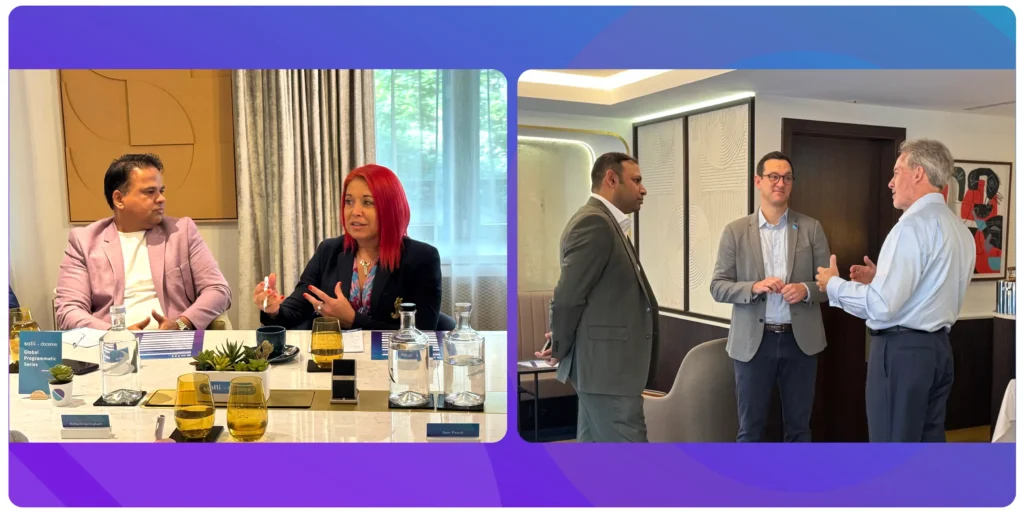
To do this well, progress typically requires two critical practical enablers:
a) Connecting systems – securely, and with purpose
The technology to support this already exists inside most pharmaceutical companies; the issue is often that it remains disconnected. Data is “compliant but isolated.”
The group highlighted component parts that need to come together to power this:
| System | Role in scientific programmatic |
|---|---|
| CRM | Stores HCP identity, consent status, rep/MSL interactions. |
| Medical content platforms | Host scientific articles, congress summaries, MoA explainers. |
| Customer Data Platform (CDP) or secure data layer | Merges interaction data, anonymises audiences into scientific segments. |
| Programmatic HCP platforms | Deliver approved scientific content to verified HCP audiences across their daily digital environments. |
| Dashboards & analytics | Surface real-time engagement insight back to Medical Affairs and field teams. |
This allows for scientific data – not promotional metrics – to trigger activity.
For example: if a cardiologist watches a heart failure MoA video but does not attend the follow-up session, a compliant reminder or peer-reviewed summary could appear in their Medscape feed.
b) Feedback loops measured in days, not months
Instead of waiting until campaign end, programmatic enables real-time optimisation.

For Medical Affairs, this does not mean chasing clicks – it means understanding:
- Which specialties engage with different forms of scientific content.
- Where drop-off occurs in medical education pathways.
- Which congress topics generate downstream interest.
- Where field teams should prioritise follow-up.
Realising the potential of programmatic media within Medical Affairs is not about more data – it is about better connection, clearer consent, and scientific purpose. When data is treated not just as something to protect but as something that, when used responsibly, can improve clinical knowledge and patient care, digital channels shift from noise to value.
3 | Education – building fluency from foundation to future
Even with organisational alignment and technical infrastructure in place, one truth became clear at the roundtable: nothing changes unless people are equipped – and motivated – to change it. Several participants noted that teams often believe they are already “doing programmatic” simply because content is placed digitally.
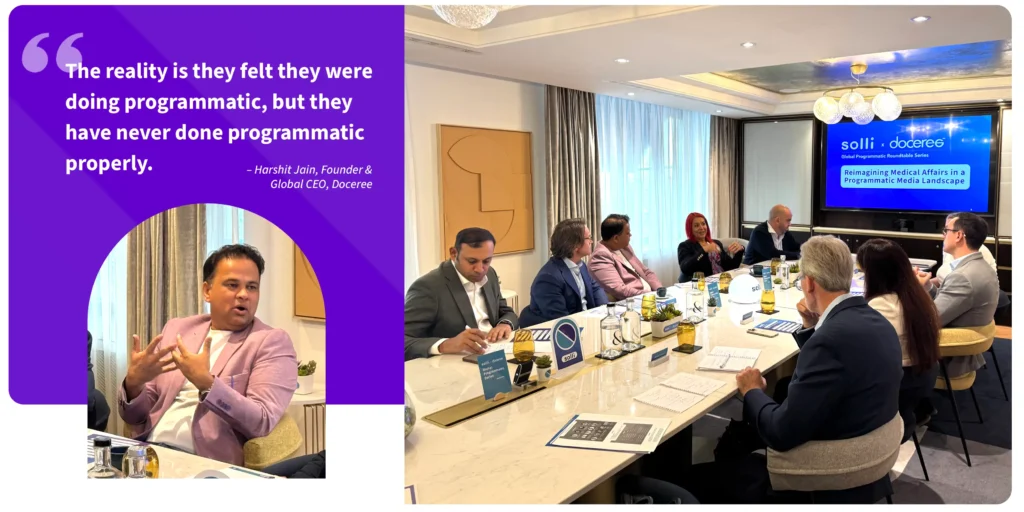
This is not a failure – it is a gap in foundational understanding.
Most medical affairs, and legal, professionals are not trained in media strategy, targeting methodologies, or the mechanics of programmatic. Equally, media teams may not fully understand scientific exchange or the weight of medical responsibility. And legal/compliance teams are often asked to judge plans they were never trained to evaluate.
So, when programmatic is introduced, the default response is hesitation rather than innovation – not because people don’t believe in it, but because they don’t know how to evaluate it with confidence.
One symptom of this lack of education was highlighted by Sam Peach, and a sentiment shared by many other participants; “A lot of money is spent on content… fewer people think about the channel… and how we are going to measure success”.
A learning pathway is needed – from Media 101 to Medical Programmatic.
To make programmatic media have an impact within Medical Affairs the industry needs to create tiered capability-building, not one-off workshops. For example:
| Level | What Medical & Cross-Functional Teams Should Understand |
|---|---|
| 1. Pharma Media 101 | What is media? Difference between paid, owned, earned. How HCPs consume digital content. Why it matters to medical affairs. |
| 2. What Programmatic Actually Is | Automated, data-driven media buying. Difference between consumer vs HCP programmatic. What it is not (just banners, metrics = clicks). |
| 3. Programmatic for Medical Affairs | How it can distribute peer-reviewed content, amplify congress data, extend MSL engagement—without being promotional. |
| 4. Compliance & Ethical Boundaries | GDPR, consent, HCP-only environments, non-promotional content rules, approvals via MLR. When it becomes marketing—and how to avoid it. |
| 5. Measurement & Scientific Impact | Beyond impressions: dwell time on clinical content, repeat engagement, uplift in scientific understanding, field team utilisation. |
The Medical communities love of data needs to be trained and re-calibrated to show that engagement data is not marketing vanity – it is evidence. Evidence of whether content landed, where it was ignored, and how scientific value can be improved.
Education alone isn’t enough. Unless medical teams know that using programmatic to extend scientific impact is supported by leadership, recognised in performance expectations, and safe from compliance risk, behaviour will not change.
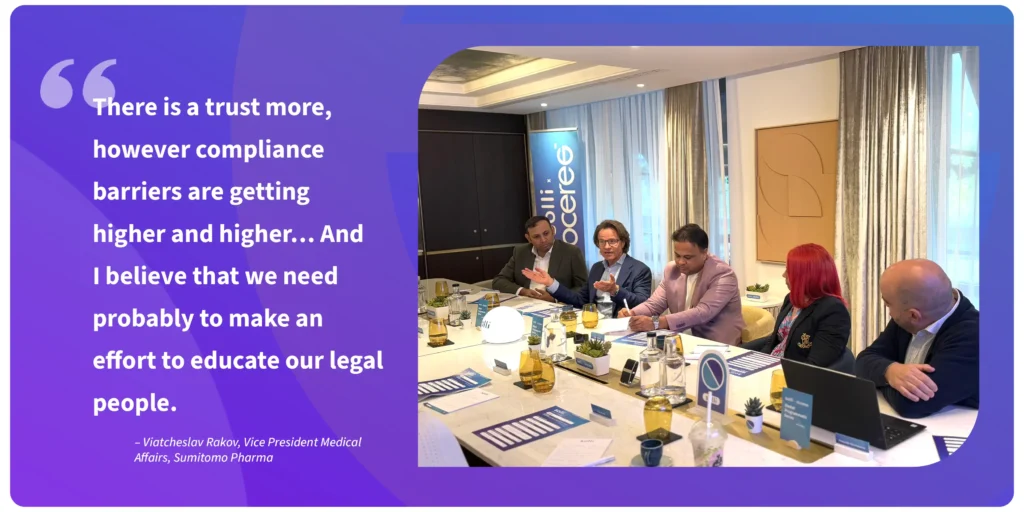
4 | Regulatory alignment – co-creating guardrails for an AI-age
A clear message from the roundtable was this: Medical Affairs × Programmatic Media will only scale if regulation is treated as a partner in innovation – not a barrier. Rather than waiting for rules to catch up, the industry has an opportunity to help shape them responsibly.
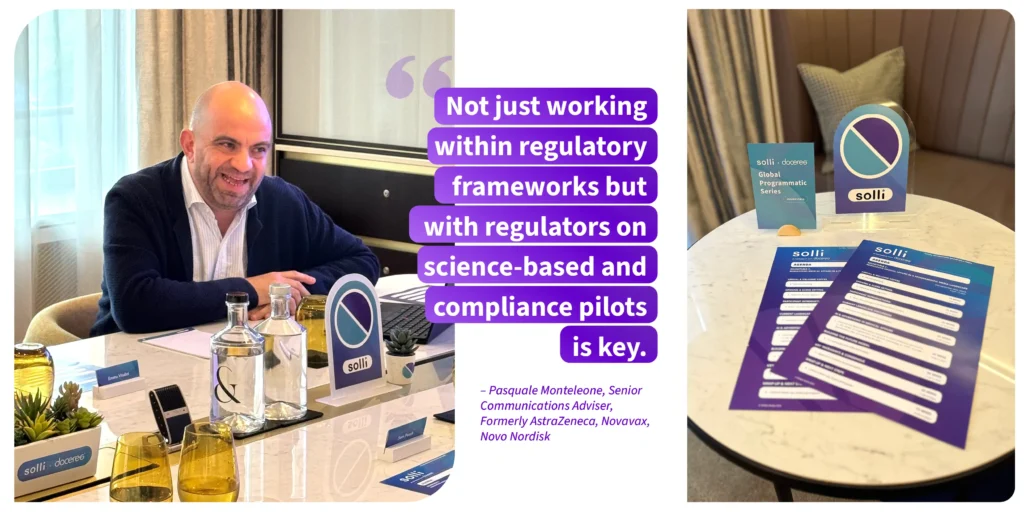
The group agreed on these two essential practical moves:
- Bring regulators in early. Work with ABPI, EFPIA and national bodies to pilot programmatic medical education – not as promotion, but as compliant scientific dissemination.
- Embed compliance in the workflow. Use regulatory language in media briefs, audience definitions, content approvals and measurement plans – not just at the final sign-off stage.
The shift is simple but profound: regulation should not only stop risk – it should help scale trust. Programmatic media, when medically led and compliantly executed, is not a marketing shortcut. It is a modern channel for scientific integrity.
What should pharma organisations do next?
To turn the insights from this roundtable into meaningful change, organisations should move from theory to structured reflection and action. Progress depends on asking the right questions – and acting on the answers – across the four areas the group aligned on: organisational orchestration, data & technology, education, and regulatory alignment.
1️⃣ Organisational Orchestration – Are we aligned, or just co-existing?
Key Question: Are medical affairs, commercial, digital, and field teams truly working from one shared scientific narrative – or running parallel strategies that only meet at approval stage?
Action: Create a cross-functional Medical × Media working group or integrate medical into brand planning cadences. Ensure programmatic activity is shaped by medical strategy – not added after commercial decisions.
2️⃣ Technical Integration & Data – Does our data inform action, or just reporting?
Key Question: Do we have systems that allow scientific insights, field engagement and media data to flow compliantly – or do they sit in silos where no one can act on them?
Action: Map where HCP data currently lives (CRM, medical portals, content platforms, media dashboards). Connect only what is consented and compliant – and create at least one live feedback loop between medical content and media activation.
3️⃣ Education – Do our people understand programmatic well enough to use it responsibly?
Key Question: Do medical affairs, legal, and compliance teams understand what programmatic is, how it works, and how it can be used scientifically – not just commercially?
Action: Invest in pharma media-specific training for medical, digital, and compliance teams. This should include foundational understanding of programmatic media, how it can be used for scientific content delivery, the compliance frameworks around it, and how success is measured. Embed this training within capability frameworks and professional development plans to ensure adoption.
4️⃣ Regulatory Alignment – Are we involving compliance early enough to shape solutions, not block them?
Key Question: Are regulators and internal compliance teams part of the design phase for digital scientific engagement – or only the approval phase?
Action: Pilot a compliant programmatic medical campaign with clear medical objectives, approved scientific content, and full auditability. Involve legal, compliance, and (where possible) industry bodies upfront to define the rules – not after the work is done.
To view all of the solli x Doceree ‘Global Programmatic Roundtables’ click HERE.

